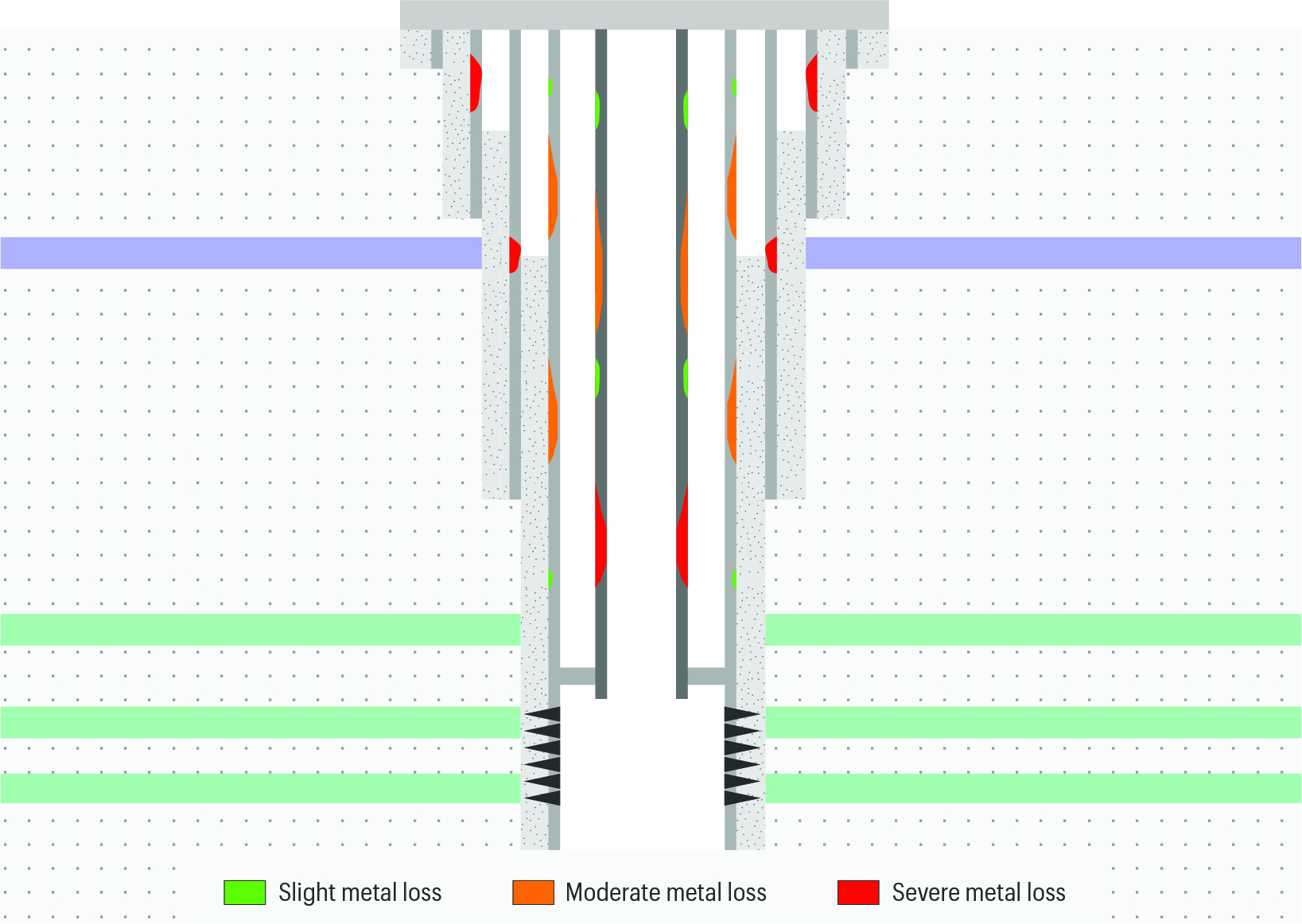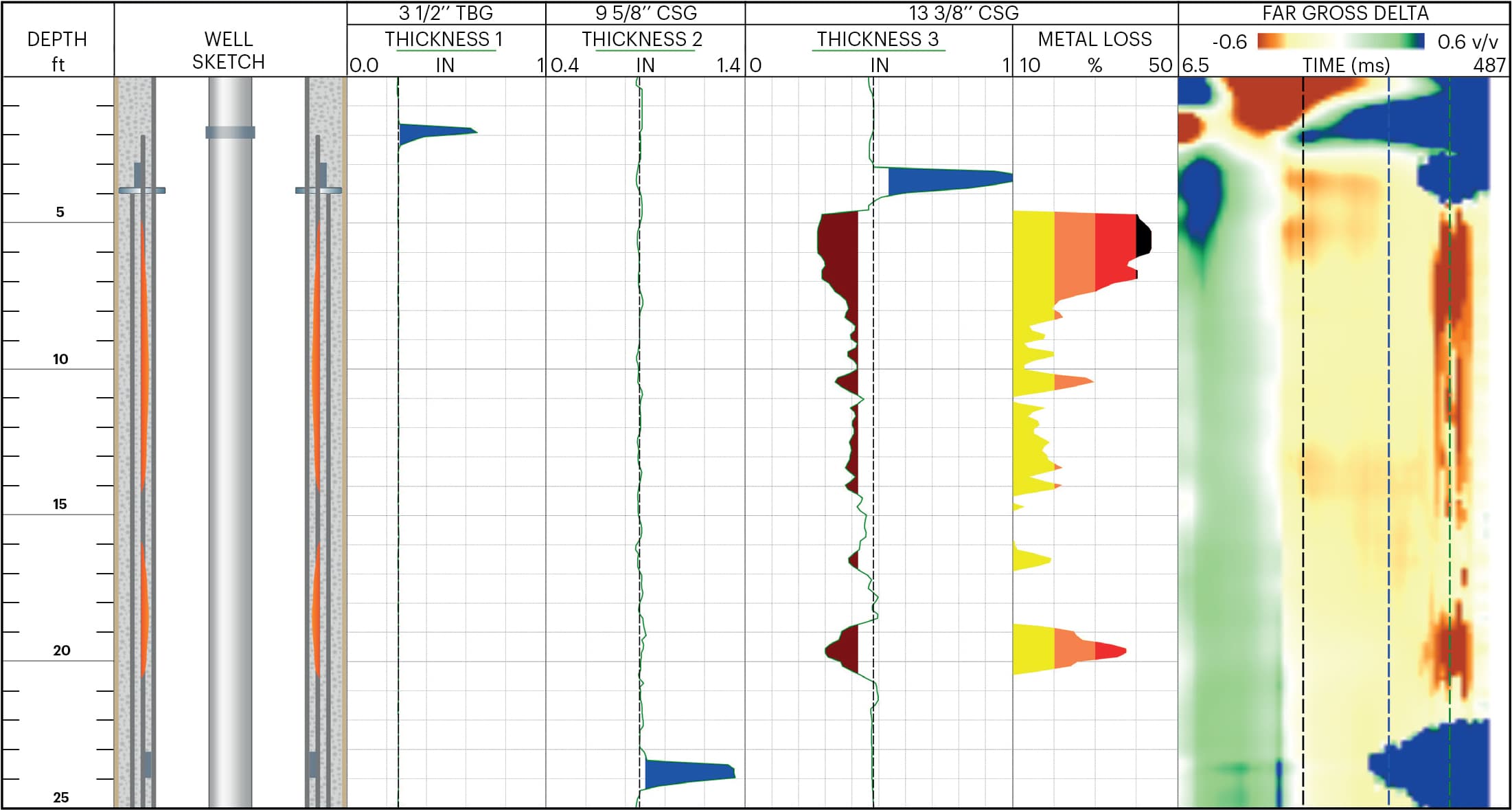Corrosion of surface casing in onshore wells is a common problem throughout the Arabian Peninsula, so operators must periodically excavate around wellheads to inspect external casing. Though costly and time-consuming, this was until recently the only way to establish the competence of the surface casing, paramount for safe operations.
Until recently, diagnostic tools run through tubing have been able to evaluate the production casing but not the surface casing. Evaluating surface casing in this way required a workover. The operator of an onshore well wanted to assess the effectiveness of a new diagnostic system to evaluate the integrity of tubing, production casing and surface casing in a single survey, without the disruption of conventional methods.


